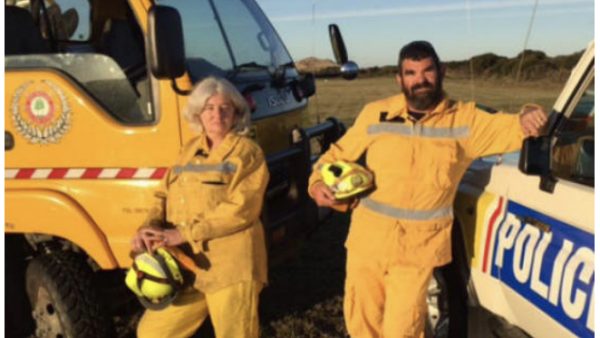Photo from the blog of Lou Sanson, DOC Director-General.
In the storm of Tuesday 10th June 2014, New Zealand’s biggest kauri dam, 110 years old, was destroyed. The storm was believed to be the biggest to hit the island in living memory. Over 300mm of rain fell overnight, within the space of a few hours.
The Great Barrier Land Harbour and Mining Company logged kauri in the Kaiaraara, Wairahi, and Kiwiriki area from 1862 until 1867, although it is told that the first kauri were taken from Port FitzRoy for use as ship’s spars as early as 1794. In 1890, the first sawmill on the island was established at Bush’s Beach in Kaiaraara Bay. When the company went bankrupt, the mill and machinery were removed.
In 1909, the Kauri Timber Company built a mill at Whangaparapara originally to process kauri from the mainland. In 1914, the mill closed, a result of labor shortage and lack of demand for timber, but in 1926 logging resumed, and three dams were built on the Kaiaraara Stream. The milling was concentrated on stands of kauri that had previously been considered inaccessible, and the kauri forest was decimated. It is estimated that up to 90 million feet of timber was milled.
To transport the logs, the three dams erected from kauri logs were built across the headwaters of the Kaiaraara Stream, directly below Hirakimata. The largest dam is the lowest. These dams allowed loggers to transport kauri logs from areas too remote and steep for them to be removed by other means. Water was allowed to build up behind the dams and then released, allowing the kauri, the only buoyant native timber, to flood downstream to the mouth of the Kaiaraara River. The process caused erosion of the valley and contributed to the development of the broad silt deposit at the river mouth.
A Kauri Dam is constructed of wood with a “trapdoor” near the bottom large enough for the logs to pass through. The logs were typically a couple of metres in diameter and 4-5 metres long, so the door was considerable in size, and the dam was tens of metres high. The lower Kaiaraara dam is braced into solid rock to take the tremendous load of the kauri. The trapdoor was constructed so that when the dam was full, it could be tripped and the water released. The logs floating above the dam were sucked down through the hole and swept down to the sea.

The technology of log-driving dams originated in Europe and developed in North America. In the 1850s, driving dams to the west of Auckland were copies of the timber-built structures of Nova Scotia. But New Zealand’s dams evolved into a distinctive form. Improvements included a simple but effective lifting gate design that allowed the dams to be released by a rigger and then reused. The dam collected a large amount of water on a fairly small stream. Over many months, as the dam slowly filled, logs were felled and laid in the stream bed. The gate of the dam was tripped, usually during a storm (to enhance the natural flood), and the power of the water drove the logs down to navigable water. A dam might be reused for several years before it was abandoned.
Kauri
Kauri trees grow to more than 50 metres tall, with trunks of up to 16 metres. Maori used kauri timber for boat building, carving, and housing, and the gum from the trees for starting fires. When European settlers arrived, the magnificent kauri forests were decimated first by sailors who realised the trunks of young kauri were ideal for ships’ masts and spars, and then by settlers who discovered the sawn timber of the mature trees gave exceptional quality for building.
Kauri Dieback Disease
The disease is caused by a microscopic fungus-like organism, called Phytophthora agathidicida (PA). It lives in the soil and infects kauri roots, damaging the tissues that carry nutrients and water within the tree, effectively starving it to death. There’s currently no proven cure or treatment, and nearly all infected kauri die. The disease is easily spread through soil movements, for example, when soil is carried on dirty footwear, animals, equipment, and vehicles. We can save our kauri forests by containing the disease and stopping it from spreading to other areas. Kauri dieback is found in the upper North Island.
Kauri dieback can be spread by just a pinhead of soil. But you can help save kauri:
- Clean soil off your footwear and other gear every time you enter or leave an area with native trees, and at every cleaning station.
- Use disinfectant only after you’ve removed all soil.
- Stay on track and off kauri roots. A kauri’s roots can grow outwards 3 times as far as its branches.
- Spread the word within your networks on how to stop kauri dieback.
Infected trees may not show it – always assume there is kauri dieback. If you’re in native bush in the upper North Island, it’s likely you’ll be near kauri.






